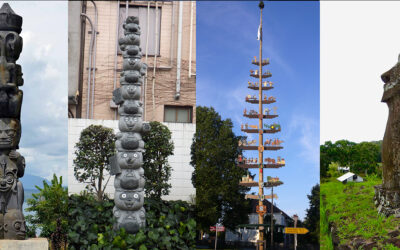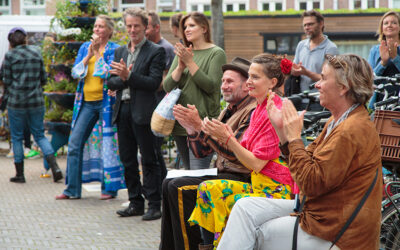The BeeTotem project, at its core, serves as a social sculpture and methodological approach geared toward the transformation of urban spaces into temporary sanctuaries for pollinators. This ambitious endeavor harnesses a blend of sociological, ecological, and educational elements, facilitated through performative acts, sculptural installations, and rigorous scientific research.
Sculpting Nature and Community: A Vision for BeeTotems
Within the realm of this artistic concept, totemism stands as a central theme, explored through visual and performative mediums. Local residents actively participate as custodians of a dynamic living sculpture, fostering a sense of communal ownership and responsibility.
Material Alchemy: Innovating with Recycled Plastic and Pigments
One of the project’s notable innovations lies in its pioneering use of recycled plastic, artfully combined with pigments. This fusion ventures into uncharted territory within the realm of material expression.
Pushing Boundaries: The Intersection of 3D Printing and Organic Symbiosis
Concurrently, intensive research delves into material application, pushing the limits of 3D printing technology. This exploration seeks to amplify the project’s synergy with organic materials, ultimately resulting in manifestations suffused with a profound spiritual essence.
Preserving Essence: Food Safety and individual aesthetics within BeeTotems
Food safety, longevity, and the preservation of each BeeTotem’s distinctive identity within a unified series take precedence in this endeavour. The project strives to create an enduring legacy, ensuring the continued relevance and individuality of each component.
Inspiration and Knowledge: Pioneering Presentation Techniques for Diverse Audiences
Furthermore, the BeeTotem project doesn’t merely culminate in static artworks; it extends its impact through innovative presentation techniques. These methods aim to disseminate inspiration and knowledge across diverse cultural audiences, culminating in the establishment of entirely novel exhibition paradigms that resonate with the contemporary zeitgeist.
Academic and scientific research components: focus on social-ecological contexts
The academic and scientific research components of the ‘BeeTotems for RefuBees’ project are focused on the social-ecologial contexts. The social components are measured on engagements of the individual and as a group situation, while the ecological is analysed by quantitative measurement of a specific bee sort. Each installation is treated as individual case studies.
The cultural background of totemism: traditions and social cohesion
Totemism and its associated rituals derive from pagan traditions. Depending on cultural en environmental circumstances, manifestations have been changing and developed over millennia. However, the intentional method stayed constant: people engagements in the totem to generate and advance social cohesion.
BeeTotems on site: Exceptional features
The setup of a BeeTotem includes a variety of constructs, components and activities which are described in other blogs. BeeTotems for RefuBees is avant-garde, bottom-up, circular, up-cycling, all-inclusive and currently beyond the feasibility study.
Image: BeeTotems enable people to engage with the natural environment and simultaneously expose complex processes / Ernst van Deursen


